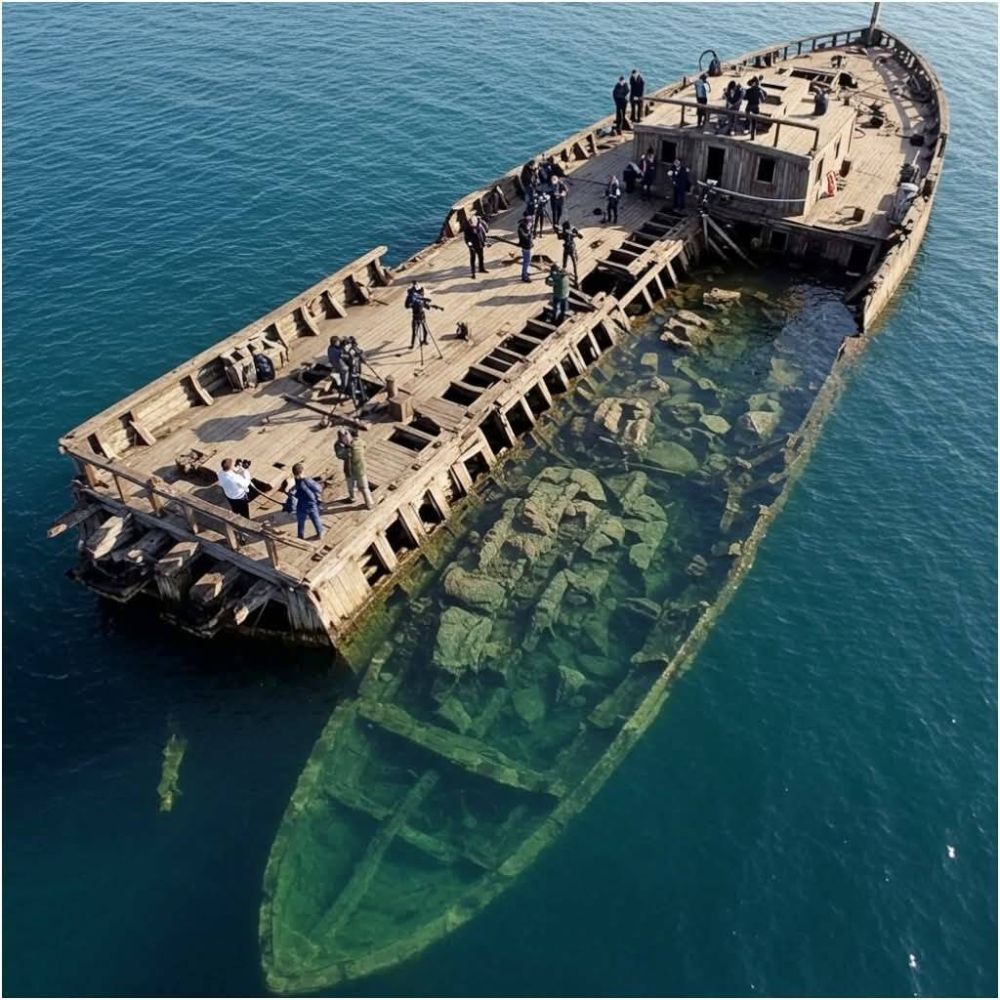Unveiling the “Ghost Ship” of Tobermory: A Glimpse into Lake Huron’s Maritime Past

The year is 2023, and a small research vessel bobs gently on the crystalline waters of Big Tub Harbour, a natural inlet carved into the rugged shores near Tobermory, Ontario. Below, resting just meters from the surface, lies the magnificent skeletal remains of the schooner Sweepstakes, a “ghost ship” forever locked in a watery embrace. For decades, this site has been a pilgrimage for divers and curious onlookers, a tangible link to Lake Huron’s formidable maritime history.
Our story, however, begins not in the present, but in the autumn of 1885. The Sweepstakes, a proud two-masted schooner built in Burlington in 1867, was a workhorse of the Great Lakes. Her wooden frame, crafted to withstand the tempestuous freshwater seas, had carried countless tons of cargo—timber, grain, and stone—across the vast inland oceans. On that fateful September day, she was laden with a heavy cargo of coal, bound for destinations unknown. A sudden squall, common on Lake Huron, descended with a fury. The waves, often underestimated in their power, slammed into her hull. She sprang a leak.
The crew, seasoned sailors, fought valiantly against the encroaching water, their pumps straining. But the old ship, despite her robust construction, was slowly succumbing. They managed to make it to the relative safety of Big Tub Harbour, a place renowned for its deep, sheltered waters. The immediate danger of sinking in open water was averted, but the damage was done. The Sweepstakes settled, her port side slowly listing, until she rested gently on the sandy bottom, her cargo of coal acting as a heavy anchor. Attempts to refloat her proved futile; the cost and effort deemed too great for a vessel of her age. And so, she was abandoned, left to the silent guardianship of the lake.
Fast forward to the early 20th century. Local fishermen and early recreational divers began to discover the eerily preserved wreck. The cold, fresh water of Lake Huron, unlike the corrosive salt of the oceans, acted as a natural preservative. The Sweepstakes became an accidental museum, her timbers gradually softening, her deckhouse slowly collapsing, yet her overall form remained remarkably intact.
In recent decades, archaeological surveys have meticulously documented her structure. ROVs glide through her hold, revealing the precise arrangement of her internal frames and the scattered remnants of her final cargo. Divers, under the watchful eye of Parks Canada, explore her every crevice, uncovering artifacts—a stray ceramic shard, a rusted bolt, a piece of rigging—that whisper tales of the men who once sailed her. The exposed deck, often bathed in sunlight, becomes a stage for interpretation, where guides recount her story to visitors peering down from glass-bottomed boats or standing on the weathered planks of the slightly submerged bow.
The Sweepstakes today is more than just a wreck; she is a living archive. She reminds us of the ingenuity of 19th-century shipbuilding, the perils of Great Lakes navigation, and the enduring power of nature. Each year, new generations gaze upon her, witnessing a tangible piece of history that continues to surrender its secrets, offering a profound glimpse into Lake Huron’s vibrant, and sometimes tragic, maritime past. She is indeed a “ghost ship,” but one that speaks volumes, her story echoing across the clear blue depths of Tobermory.
